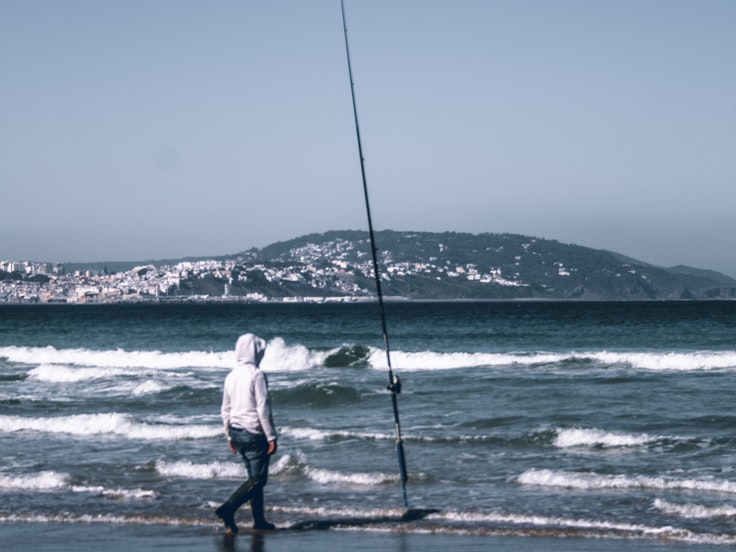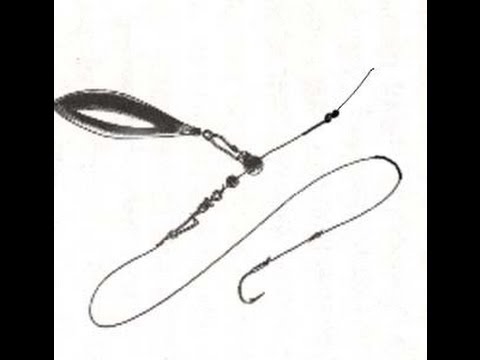
Like all fishing techniques, surfcasting offers you a range of different rigs to use for your fishing. Depending on the species you're after, or the area you're fishing in, you'll be able to use different weights, lines, leaders or hooks.
In this short guide, we're going to show you the different rigs you can buy for a ready-made part or make yourself, either on the water or in the peace and quiet of your own home.
The sliding rig

This is a traditional rig that is well known to anglers. It's easy to do. It doesn't require a great deal of technical skill or overly sophisticated equipment to complicate your task.
You'll need an oval pearl swivel with a staple to attach a sinker, a staple to tie a strong knot in the leader, a 1m to 1.5m leader at the end of which you'll attach a single hook size 2 to 2/0 depending on the bait you're using and the fish you're after.
You can target many species of fish, including sea bass and bream.
Self-rigging
Copyright Surf Casting Club de Caen
Once again, this is a tried and tested model for surfcasting. As the name suggests, you let the fish hook itself when you take the bait.
It takes a bit of patience to make, and you'll have to experiment a bit with the lengths you use to adjust it to your conditions. To do this properly, you need to connect the body of the line to a slider through which slides a line connecting an automatic sinker to a rolling swivel. At the other end of thebarrel swivel is the fluorocarbon leader with a diameter of 30 to 35/100.
Remember to wrap a rubber ball around each side of your slider to reduce both the noise of its stop and premature wear of the weight or barrel swivel junction.
The fixed clip system
Copyright Chtipecheur
This set-up is interesting in many ways. It allows you to fish with several hooks with very little risk of them becoming tangled together. This is thanks to the use of clips. Easy to install, they offer the ideal bait presentation, always fishing, allowing you to get a great advantage.
You can install 2 or 3 of these clips to avoid having a leader or part of a line that is too long to cast. A 30-35/100 fluorocarbon strand should be installed at the end of the line, followed by a hook. Braid is not recommended.
A releasable sinker will be the best choice to hold the bottom well and keep the rig in position, ready to catch both sea bass and bream. This will be all the more true if you practice your technique in places where there is a lot of sand on the bottom.
1, 2 or 3-stack rigs
Copyright Chtipecheur
This is surely one of the most popular rigs used by anglers. It allows you to multiply your chances of catching a fish thanks to the presence of three hooks. This means you can multiply the possibilities both in terms of quantity and variety. You can vary the bait you use to meet the expectations of the fish.
Be careful, though: the more you multiply the number of hooks present, the more you run the risk of tangling the line when it hits the water, and you may not realise it until you retrieve the line. This can sometimes make you miss your fishing.
You can also vary the length of the stack to limit the risks. A shorter top line and a longer bottom line can be an excellent technique for exploring new spots more effectively.
It will be essential to provide you with quality swivels. Remember that rotation is an essential aspect of ensuring a certain natural drift or undulation of your bait. Sea bass are opportunists, but other species will be more attentive and harder to lure.
Pearls will also need to be present to help with this rigging system, as will the use of fluorocarbon, nylon for your weight rig or even amnesia for the most crowded and trickiest spots to fish.
In conclusion, the number of rigs you can use is almost limitless these days. You can find different ones for every species of fish and almost every fishing spot.
That shouldn't stop you from making your own observations once you're out fishing and being able to modify your presentation little by little to gain in efficiency and in the number of successful hook-ups, rods and reel in hand.
You might like to read :
